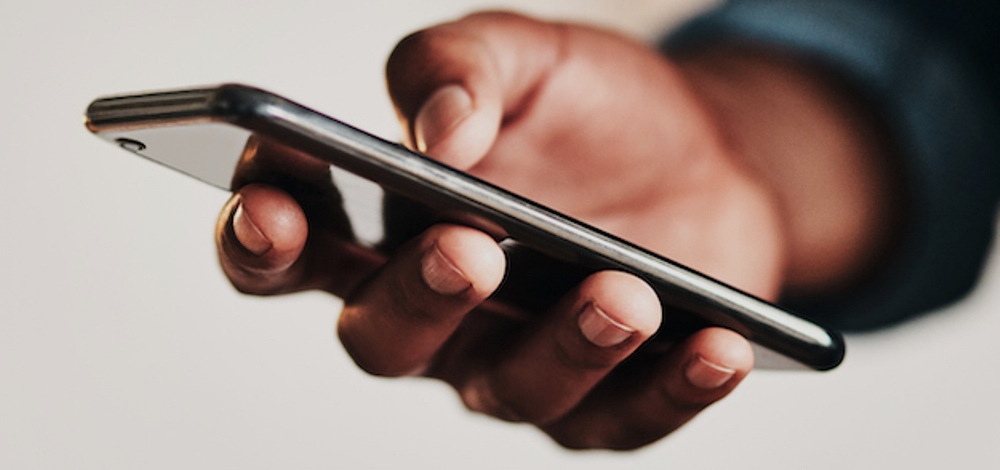Writer: EFOSA JUSTIN
The portability and usability of mobile devices, make them ubiquitous in society. Many Mobile device users use their phones to carry out numerous tasks such as Voice and video calling, Emailing, Content creation, photography, forex trading, including Mobile banking.
The sensitive data entrusted in these Mobile devices causes the device to bear a high level of cyberattack vulnerability to its users. Cybercriminals have developed a strong interest in attacking and stealing data from mobile devices because of the amount of sensitive data accessible from the device.
In commemoration of the Cybersecurity Month this October, we will evaluate some measures we can take to secure our mobile devices from cyberattacks.
By taking these simple but critical steps, you can protect your devices against cyberattacks and secure sensitive data on your phone:
1. Passwords and Access Control Management
Many users have adopted the use of passwords and biometric access controls to secure their data for both device access controls and applications and website logins. However, cyber threats and vulnerabilities still present themselves.
To enhance password and access management, consider the following;
- Ensure that all passwords are at least 8 characters long with a combination of letters, characters, and numbers to ensure that the password is strong enough.
- Avoid the use of the “remember password” feature when logging into a website or application as this will increase the chances of another person gaining full access.
- Avoid the repetitive use of the same password combination to limit the range of access to intruders in case there is already a level of breach.
- Always enable Two-Factor Authentication (2FA) to add an extra layer of remote access authorization when logging into applications where it’s made available. This is recommended mainly for financial apps such as mobile banks and blockchain.
2. Adopt the Use of a Virtual Private Network (VPN)
VPN helps to protect against exposure while surfing the internet. It secures network connections from spying on open networks.
A Virtual Private Network not only protects you while surfing the internet, but it also helps to cover your connection on a publicly shared network. It’s one of the most important remote work cybersecurity tools as it helps to protect data sharing within remote working staff working over a widespread network.
VPNs are highly beneficial and affordable. Although there are some free versions, it’s advisable to go for the paid versions which are more reliable.
3. Avoid Unsecured Websites
Unsecure websites pose critical threats to cybersecurity as they can be used to exploit network vulnerability and lead to password spying and data espionage. Such sites should be avoided.
Secure websites use HTTPS while non-HTTPS sites are insecure. These secure sites are labeled with HTTPS while the unsecured sites only have the HTTP label without the “S” and such websites should be avoided as they are prone to MITM (man-in-the-middle) attacks.
4. Avoid Use of Unprotected Wi-Fi
Free Wi-Fi is a joy to lay hold of anytime, but this free Wi-Fi can quickly become a bitter story and cause harm to our cyberspace, especially when it’s a public free Wi-Fi.
Cybercriminals on these free open networks can find their way to sensitive data on your mobile device within minutes and recent research shows that these hacking methods get easier by the day.
To mitigate this risk, use a security application like a VPN to secure your connection or always check to ensure that you connect to Public Wi-Fi that is secured with WPA (Wi-Fi Protected Access) and avoid using public Wi-Fi labeled WEP (Wired Equivalent Privacy) as this is easier to breach. Also, consider turning off all wireless connections like Bluetooth and Wi-Fi when not in use to avoid automatic connection to unassessed networks.
5. Always Update Mobile Software
Software updates are used to correct, replace, or upgrade a software after its first version has been released for public use.
Updates are often used to replace security patches that have been discovered by hackers after the software vulnerabilities of a mobile device have been exploited.
Always update software to the latest available version to ensure the best security updates are installed, protecting your device from potential vulnerabilities.
6. Activate Remote Login Notification
Remote login notification is a notice sent to your device either by mail or by the device software notifying you of access to an app or a device software account on any device.
This notification is usually to confirm if it’s you or an unauthorized person. Remote Login Notification is crucial, especially for sensitive applications such as mobile banking, Blockchain Applications, and social media accounts.
This notification can alert you of unauthorized access into your bank app or Blockchain app early so you can block it before any transaction is made. It also helps to prevent unauthorized login into your social media accounts such as Facebook, X, or TikTok on another device. These notifications come mainly by mail and can be set up in the application’s security settings.
Conclusively, protecting one’s cyberspace is very similar to protecting the physical environment. Sometimes, we need to employ the use of watchdogs, security personnel, and enhanced door locks to ensure our space is well secured.
The same is required for the protection of our mobile devices’ cyberspace. We need to employ the use of passwords for controlled access, VPNs for controlled privacy, antivirus applications to keep watch, and software security updates to help keep our doors guarded.
[Featured Image Credit]







Comments 1